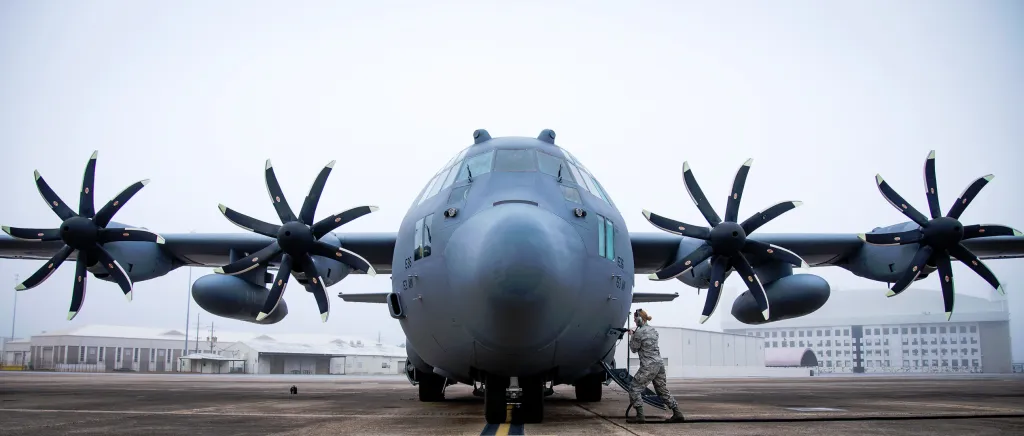The U.S. Air Force will not add eight-bladed NP2000 propellers to any more of its aging C-130H Hercules transport planes, curtailing a previous upgrade plan as it continues to transition more fully to the newer C-130J variant. The NP2000s, which give H models a boost in thrust and fuel efficiency, and help reduce maintenance demands while increasing reliability, are among several upgrades that have been helping to keep the older Hercules aircraft going.

The Pentagon recently released a budget reprogramming document, dated September 29, 2025, detailing the movement of various funds into a general-purpose modernization account. This included nearly $24 million that had been set aside for upgrading C-130Hs with NP2000 propellers. Congress must approve any such reallocation of money from one part of the defense budget to another.
“Funds are available for transfer to the Defense Modernization Account, Defense-Wide, from a congressional increase for the C-130H NP2000 Eight Bladed Propeller due to the completion of the modification effort for the fleet,” the document states. “Efficiencies in quantity were achieved due to additional C-130J procurement, which reduced the number of C-130H NP2000 Eight Bladed Propeller modifications required as remaining unmodified C-130Hs will be divested.”
The Air Force “completed [NP2000] installations on 90 C-130H aircraft in June 2025,” according to the service’s most recent budget request for the 2025 Fiscal Year, but it is unclear if that represents the total number of aircraft upgraded to date. However, it would seem that this figure is at least close to the total, given that the Air Force expects to only have 92 C-130Hs left in inventory at all by the end of Fiscal Year 2026. This includes examples assigned to Air National Guard units. As of 2021, the service planned to upgrade the propellers on around 140 H models. The Air Force first began flying H variants of the C-130 in the mid-1970s.

The Air Force also has 10 LC-130Hs, which are specially configured for operations in and around the polar regions, and have received NP2000 propellers. A portion of the U.S. Navy’s fleet of C-130T transport and KC-130T tankers, which are derived from the H model, also now sport the new propellers.

The NP2000 has long been standard on the Navy’s E-2C and E-2D Hawkeye airborne early warning and control aircraft and C-2 Greyhound carrier on-board delivery (COD) planes, as well.

Work to replace the four-bladed propellers on the Air Force’s C-130Hs with NP2000s, coupled with new electronic control systems, dates back to the mid-2010s. The propellers can give H model Hercules aircraft up to 20 percent extra thrust, reducing the distance needed for takeoff by around 984 feet (300 meters), depending on various factors, according to Collins Aerospace, the current contractor behind the upgrade package. The increase in thrust also translates to a bump in fuel economy.
In addition, the NP2000s vibrate less than the four-bladed propellers originally found on the C-130H, contributing to reduced maintenance requirements. They also have the benefit of being quieter and more reliable.
The Air Force had further combined with NP2000s with additional upgrades to the Rolls-Royce (formerly Allison) T56 series turboprop engines that power the C-130H, offering further performance and maintenance benefits, as you can read more about here.

As the budget reprogramming document notes, the Air Force’s priority now is on acquiring more C-130Js. New Rolls-Royce AE 2100-series turboprops and six-bladed propellers are among the improvements found on the J models compared to earlier variants.

By 2029, the Air Force expects the C-130H fleet to have dropped in size to just 61 aircraft, according to its Fiscal Year 2026 budget request. When the service expects to retire the very last of its H variants, including the remaining specialized LC-130Hs, is unclear. Work is now moving forward to at least supplement the latter fleet with new LC-130Js.
If nothing else, the NP2000 upgrade program for the Air Force’s C-130H fleet has come to an end.
Contact the author: [email protected]
